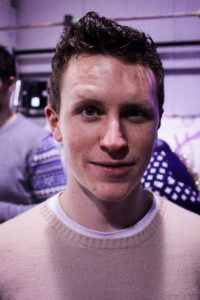Events
Origins of Delayed Recombination and Halide Segregation in Metal Halide Perovskites*
January 18, 2018 at 12 noon/13-3038
Kyle Frohna
University of Cambridge, UK, Visiting Researcher

The origin of the long carrier lifetimes in metal-halide perovskites observed at low photoexcitation carrier densities is a hotly debated topic. To date, a variety of mechanisms have been proposed explaining this behavior including: polaron formation, long-lived trap states, as well as the direct-indirect nature of the bandgap, which has been attributed to the Rashba effect. However, the Rashba effect requires the breaking of the centrosymmetric I4/mcm space group, which is a subject of considerable disagreement in the community. We have recently probed the space group of room temperature tetragonal MAPbI3 using second harmonic generation rotational anisotropy (SHG-RA). In this seminar, I will discuss a combination of the SHG-RA measurements, first principles density functional theory calculations, and analytical van Roosbroeck-Shockley calculations to investigate the implications the Rashba effect may have on the radiative lifetime of perovskites.
I will also discuss photo-induced halide segregation, a phenomenon that has been put forward as a potential cause of the reduced performance of wide bandgap, mixed-halide perovskites for tandem solar cells. Large voltage deficits have been observed in these perovskites due to thermalisation of carriers into lower bandgap, iodide-rich regions. By compositionally engineering these perovskites and monitoring their behavior using steady-state photoluminescence and voltage measurements, a new strategy for mitigating halide segregation will be shown.
Kyle Frohna is currently a visiting researcher working with Samuel D. Stranks in the Cavendish Laboratory at the University of Cambridge. He recently completed his undergraduate degree in Nanoscience and Materials Science at Trinity College, Dublin. He has worked previously with Professor Marco Bernardi at the California Institute of Technology on computing the transport properties of carriers in metal halide perovskites and he completed his undergraduate thesis project with Professor Michael McGehee at Stanford University on the fabrication of high efficiency perovskite-silicon tandems.
*This talk is part of the Perovskites Seminar Series organized by Juan-Pablo Correa-Baena from MIT’s PV Lab and sponsored by the Center for Excitonics. For more info contact Juan-Pablo: jpcorrea@mit.edu






